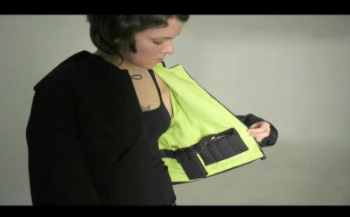| Intelligent Textiles - Wearable Absence |
| Friday, 18 June 2010 | |||
|
We, as programmers, are always on the lookout for new platforms to create software for - but have you ever thought about the possibility of programming your clothes?
"Intelligent textiles" is the general term for what you might call wearable computers. At the moment they are often fairly primitive devices at the level of a few LEDs that can be flashed in a pattern to create the latest fashion sensation - or just a geeky embarrassment depending on how well it is done and carried off. Now two teams of researchers into intelligent textiles - yes there is such a topic for academic research - have created something that is moving in a more serious direction. They have developed the concept of interactive clothing whereby the body's physical and emotional state triggers the transfer of personalized memory back to the wearer.
The project, titled Wearable Absence, uses a system of wearable devices which incorporate adaptors and soft cabling systems with fashionable clothing designs. The prototype garments incorporate wireless devices and bio-sensing devices to retrieve objects from a database of image and sound, creating a narrative, or string of messages, from an 'absent' person. The sensors record the wearer's temperature, heart rate, galvanic skin response (moisture) and rate of respiration. The data is sent via the Internet to a database which in turn sends back messages to the clothing. The messages, which evoke memories of an absent person, may take the form of voice recordings or songs broadcast from speakers sewn into a hood or shoulder seams, or scrolling text on a LED array woven into fabric, or video and photographic imagery.
To give an example, a person might be experiencing a certain emotional state such as stress, grief or despair. The bio-sensors would prompt the person's clothing to receive a range of messages such as photos, texts and sound recordings to provide comfort. The whole idea is to enhance human experience, with potential for the fields of health care and well-being. Clearly, however, with some additional programming, an open API say, the possibility of developing apps for clothing that can access a remote database, provide information about the person's physical state and retrieve video and audio data is intriguing and might give new meaning to "there's an app for that".
For more information visit the websites of the two research teams: SubTela and WEARABLEABSENCE For a more DIY approach see Fashioning Technology: A DIY Intro to Smart Crafting.
<ASIN:0596101880> <ASIN:0596523688> |
|||
| Last Updated ( Saturday, 19 June 2010 ) |



